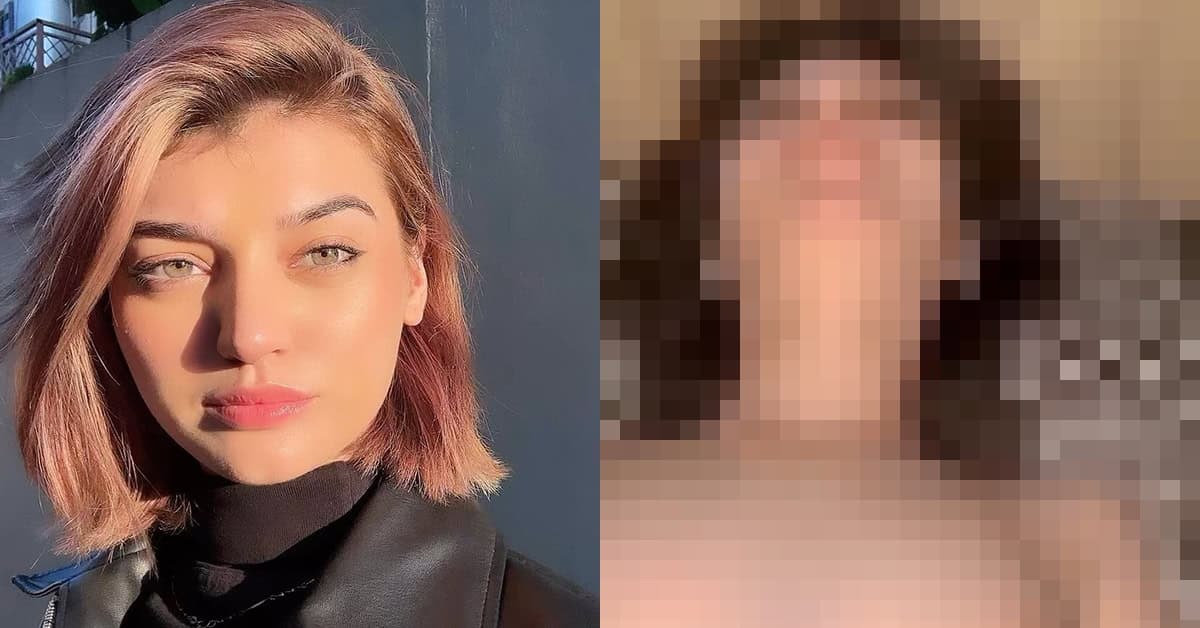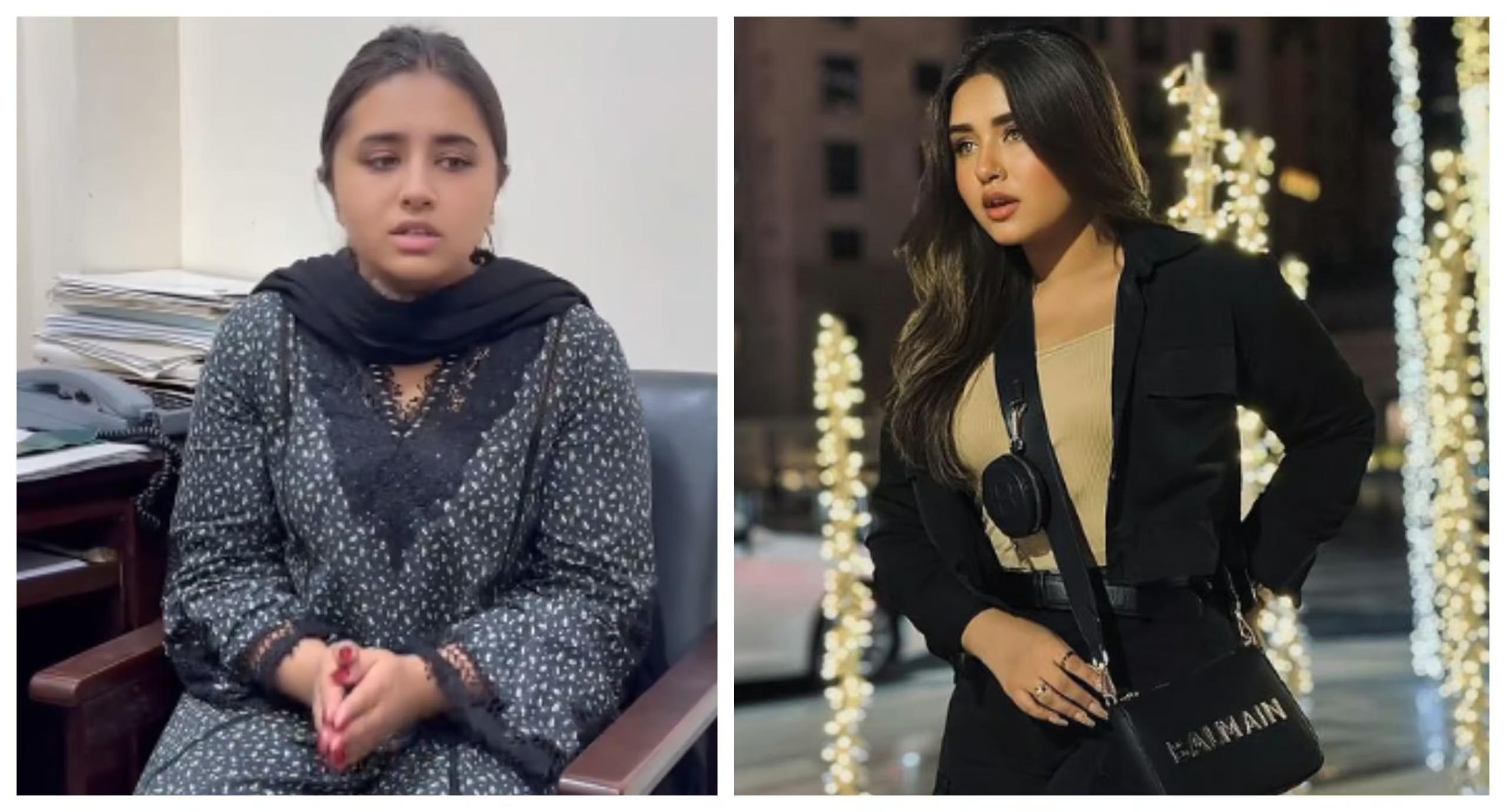Tiktoker Minahil Viral Video The Controversy, Public Reaction, and Social Media Impact
The digital era has revolutionized the way content is created and shared, often blurring the lines between privacy and public exposure. One of the most talked-about incidents in recent times involves Pakistani TikToker Minahil Malik. A leaked video clip—allegedly showing the TikToker in a compromising setting—rapidly went viral, igniting a heated debate among social media users. In this comprehensive report, we delve into the origins of the controversy, analyze the authenticity of the video, and explore its broader implications for content creators in the age of social media. The incident, which first surfaced on October 30, 2024, serves as a poignant example of how digital content can both build and challenge a public persona.
This article is organized into seven sections, each addressing a critical aspect of the viral video phenomenon. We begin by laying the groundwork for understanding the incident, discussing who Minahil Malik is and what led to the controversy. We then review public reactions and offer a detailed analysis of the content in question. Finally, we discuss the responses—or lack thereof—from the TikToker herself, before reflecting on the wider impact such incidents have on privacy and social media dynamics. Through this in-depth examination, we aim to provide a balanced perspective on one of the most contentious discussions in online media today.
BACKGROUND OF THE INCIDENT
Understanding the controversy surrounding TikToker Minahil Malik requires a look into her digital persona and the context that led to the incident. Known for her energetic content and a massive following on TikTok, Minahil Malik has carved out a niche in the increasingly competitive world of social media. Her online presence, marked by engaging videos and interactive content, has earned her millions of followers who tune in regularly to watch her latest posts.
On October 30, 2024, a video surfaced online that quickly gained traction and sparked widespread debate. Allegations circulated that the video, which purportedly shows Minahil in an intimate setting with a friend, was genuine. However, the circumstances surrounding its release were murky from the outset. While some observers claimed the content was real, others were quick to question its authenticity. The rapid spread of the clip is emblematic of today’s digital landscape, where even a minute fragment of footage can be dissected, shared, and debated by millions within hours.
Several factors contributed to the incident’s explosive spread. First, the nature of the content—a seemingly personal and compromising moment—naturally piqued the curiosity of social media users. Second, the incident occurred at a time when privacy violations and unauthorized leaks are hotly debated topics. Lastly, the very fact that a well-known influencer was at the center of the controversy added fuel to the public discussion. As we explore this case further, it is essential to note that controversies like these are not isolated events but are rather symptomatic of the broader challenges posed by digital media in maintaining personal privacy.
Minahil Malik’s situation is also reflective of a larger trend: the viral nature of digital content, irrespective of its authenticity. The speed at which such content can be disseminated, and the immediate reactions it garners, underscore the double-edged sword of social media. On one side, platforms like TikTok empower content creators by providing them with an unprecedented audience; on the other, they expose individuals to the harsh realities of public scrutiny and the potential for privacy invasion. This background sets the stage for the multifaceted discussion that follows in subsequent sections.
PUBLIC REACTION AND DISCUSSION
When the video clip went viral, it quickly became a polarizing topic across various online communities. The public reaction to the alleged leak was mixed, reflecting a spectrum of opinions about personal privacy, accountability, and the ethics of viral content sharing. Social media users were quick to express their discontent, with many condemning what they saw as a blatant violation of Minahil Malik’s privacy. Others, however, were not convinced of the video’s authenticity and suggested that it might have been a calculated attempt to garner attention.
Critics of the video argued that if the content were genuine, it would represent a serious breach of privacy—one that could have long-lasting personal and professional repercussions for the TikToker. These users expressed concern over the ethics of sharing such content online without consent. The widespread sharing and discussion of the clip also sparked a broader debate about the responsibilities of social media platforms in protecting the privacy of their users. As seen in similar high-profile cases, the virality of such content often leads to a call for stricter regulations and improved content moderation policies.

On the other hand, there was a segment of the audience that speculated the video might have been staged. Supporters of Minahil Malik pointed out that the clip could have been fabricated or heavily edited, thereby suggesting that the incident might have been a publicity stunt rather than an actual privacy breach. This camp argued that in today’s media landscape, where sensationalism can sometimes drive viewership, influencers might resort to controversial tactics to remain in the public eye. The debate was further complicated by the lack of any clear statement from the TikToker herself at the time the article was published. This silence added an extra layer of mystery to the situation, leaving fans and critics alike to speculate about the truth behind the clip.
The reaction to the viral video also highlighted the role of social media in amplifying controversies. Platforms like TikTok, Twitter, and Instagram enable content to spread rapidly, often bypassing traditional media gatekeepers. This immediacy, while beneficial in democratizing information, can also lead to the proliferation of unverified or manipulated content. The rapid spread of the Minahil Malik video underscores the challenges faced by both content creators and social media companies in controlling the narrative once such a video is leaked online.
In summary, public reaction to the incident was marked by a dichotomy of views. On one hand, there was a palpable sense of violation and disappointment among those who believed the video was a genuine breach of privacy. On the other hand, skeptics questioned the authenticity of the clip and speculated on the possibility of it being a deliberate attempt at self-promotion. This section underscores the complex interplay between personal reputation, public perception, and the rapidly evolving nature of digital media controversies.
ANALYSIS OF THE VIRAL VIDEO AND ITS AUTHENTICITY
The heart of the controversy lies in the authenticity of the viral video. Social media is rife with instances of manipulated or staged content, making it increasingly challenging to discern fact from fiction. In the case of the leaked video featuring TikToker Minahil Malik, several aspects have raised doubts about its genuineness.
Firstly, the technical quality and editing of the video have been scrutinized by viewers. Critics have noted that certain elements within the clip appear inconsistent with what one might expect from an unedited, genuine recording. Issues such as abrupt transitions, unusual background sounds, and signs of digital manipulation have led many to suspect that the video might have been edited. This technical analysis, though not conclusive, provides a basis for doubting the legitimacy of the content.
Moreover, Minahil Malik herself has claimed that the video is fake and edited. Although she has not issued an in-depth public statement addressing the full scope of the allegations, her brief remarks have resonated with a section of her audience who believe that the clip was manufactured to either tarnish her reputation or to serve as a publicity stunt. The ambiguity surrounding her response further fuels the debate. Without a definitive, detailed explanation from the TikToker, the online community is left to piece together the story from fragments of evidence and speculative commentary.

The analysis of the video also extends to the broader context in which such content is produced and disseminated. In today’s digital ecosystem, it is not uncommon for content to be repurposed or manipulated for various reasons. Sometimes, such alterations are made to exaggerate a scenario, to create sensational content that garners more views, or even to settle personal scores. This context is particularly relevant in the case of Minahil Malik, whose rising fame makes her a potential target for such tactics. The possibility that the video was designed to mislead viewers cannot be ruled out, given the multiple incentives for either discrediting a rising influencer or for generating buzz through controversial means.
Additionally, the mixed public reaction plays a significant role in shaping perceptions about the video’s authenticity. When a piece of content is met with divided opinions—some decrying it as a violation of privacy while others dismissing it as a hoax—it becomes increasingly difficult to reach a consensus on its veracity. The polarized responses have not only deepened the controversy but have also highlighted the susceptibility of digital media to manipulation. In many ways, the incident serves as a case study on the vulnerabilities of online content and the challenges faced by public figures in maintaining control over their digital image.
In conclusion, the authenticity of the viral video remains a matter of intense debate. Technical indicators and the TikToker’s own assertions point toward the possibility of the video being edited or staged. Yet, the lack of a comprehensive, official statement from Minahil Malik means that uncertainty continues to cloud public opinion. This section underscores the need for critical media literacy in an age where digital content is both ubiquitous and easily manipulated.
RESPONSE AND STATEMENTS FROM MINAHIL MALIK
One of the most striking aspects of the controversy is the absence of a detailed response from Minahil Malik. As the central figure in the incident, her silence or minimal reaction has contributed significantly to the ongoing speculation and debate. In the days following the leak, the TikToker only briefly mentioned that the video was fake and edited—a statement that, while brief, has sparked as much controversy as the video itself.
Minahil Malik’s reticence to engage in a comprehensive public discussion about the incident leaves much to be interpreted. For some fans, this silence may be a strategic move to avoid further inflaming an already volatile situation. For others, it might be perceived as an inability to counter the allegations effectively. The lack of a formal, detailed statement has therefore become a critical focal point in the narrative surrounding the incident. It underscores the challenges that public figures face when their private lives are thrust into the public domain without their consent.
In her short response, Minahil Malik dismissed the allegations by asserting that the leaked footage was not genuine. This brief clarification, however, did little to quell the speculations among her followers and detractors alike. The online community remains divided, with some accepting her explanation at face value, while others demand more substantive evidence or a detailed account of the events leading up to the leak. The TikToker’s failure to address key questions—such as the source of the leak, the method of editing, and her subsequent course of action—continues to fuel the fire of speculation.

It is important to note that the phenomenon of a minimal or ambiguous response from public figures is not uncommon in the realm of social media. Influencers and celebrities often find themselves in a precarious position where any response, or the lack thereof, can be construed in multiple ways. In Minahil Malik’s case, her brief comment may have been intended as a measured response, aimed at mitigating the spread of false information without providing fodder for further controversy. However, the incomplete nature of her response has left her audience yearning for more clarity.
Furthermore, the impact of her response—or her silence—on her personal brand and public image cannot be understated. In an era where every public figure is expected to maintain a transparent and accessible persona, any deviation from this norm is subject to intense scrutiny. The incident involving the viral video is a reminder of the high stakes associated with digital fame. For Minahil Malik, the challenge now lies in managing her public image while navigating the complex dynamics of social media backlash. Until she offers a more detailed explanation or takes definitive action against those responsible for the leak, the controversy is likely to persist, continuing to cast a shadow over her online presence.
In summary, Minahil Malik’s limited response to the viral video controversy has only added layers of ambiguity to an already complex situation. While her dismissal of the video as fake has some supporters on her side, the lack of a thorough, transparent statement has left many questions unanswered. This section illustrates the delicate balancing act faced by social media influencers when confronted with potential breaches of privacy and underscores the need for clear communication in mitigating public backlash.
THE ROLE OF SOCIAL MEDIA IN SHAPING PUBLIC OPINION
The Minahil Malik incident is not an isolated case but part of a larger conversation about the impact of social media on public discourse. In today’s interconnected world, social media platforms are more than just channels for entertainment—they are powerful tools that shape public opinion, influence behavior, and even affect the reputations of public figures.
One of the defining characteristics of social media is its ability to amplify information at an unprecedented scale. In the wake of the leaked video, various platforms such as TikTok, Twitter, Instagram, and even WhatsApp became conduits for discussion, speculation, and debate. The speed with which the video was shared and commented upon is a testament to the viral nature of digital content. Every share, like, and comment added momentum to the controversy, effectively turning a single piece of content into a global talking point.
However, this amplification comes at a cost. The same mechanisms that enable rapid sharing of information also facilitate the spread of misinformation and unverified content. In the case of Minahil Malik, the debate over the authenticity of the video was fueled by conflicting narratives circulating online. While some users staunchly defended the TikToker by dismissing the video as an edited fabrication, others used the content as evidence of a purported lapse in judgment. This divergence of opinions highlights the challenges inherent in a digital landscape where every piece of content can be reinterpreted and repurposed according to the viewer’s perspective.

Moreover, social media’s influence extends beyond mere opinion-shaping—it has significant implications for privacy and accountability. Incidents like the one involving Minahil Malik force us to confront critical questions about digital consent and the ethics of content sharing. When a private moment, whether real or manipulated, is exposed to the public without permission, it not only affects the individual involved but also sets a dangerous precedent for other content creators. The ease with which such footage can be leaked and disseminated serves as a cautionary tale about the vulnerabilities associated with online fame.
Another important aspect is the role of online communities in holding public figures accountable. In many cases, social media has emerged as a modern-day tribunal where influencers are judged not only for their actions but also for perceived missteps. The public outcry following the viral video is emblematic of this phenomenon. Fans and critics alike use their collective voice to demand explanations, corrective actions, or even retribution. While this can sometimes lead to positive outcomes—such as increased awareness about privacy rights—it can also result in disproportionate backlash that tarnishes reputations even when the underlying claims are unfounded.
The digital dynamics observed in this controversy are a microcosm of the broader challenges faced by modern society. As platforms continue to evolve, so too does the nature of public discourse. The incident involving Minahil Malik demonstrates that social media is a double-edged sword: while it can be a source of empowerment and connection, it also has the potential to undermine privacy and foster an environment where the line between fact and fiction becomes increasingly blurred.
Ultimately, the role of social media in shaping public opinion is undeniable. The Minahil Malik case serves as a stark reminder of the power and peril inherent in digital communication. As users and content creators navigate this complex terrain, the need for responsible content sharing and critical media literacy becomes ever more apparent.
The controversy surrounding TikToker Minahil Malik’s viral video is emblematic of many challenges that characterize the modern digital landscape. As we have explored throughout this article, the incident touches upon themes of privacy violation, media manipulation, public accountability, and the far-reaching influence of social media. The rapid spread of the leaked clip, coupled with divided public opinion, underscores the dual nature of digital fame: while social media platforms empower influencers by offering massive audiences, they simultaneously expose them to intense scrutiny and potential exploitation.
News -
Morad Full Video Leaked Privacy Controversy and Social Media Impact
Shruthi Narayanan Viral Video A Deep Dive into Privacy, Ethics, and Digital Controversy
Calla Pramuka Leaked Video Story The Viral Controversy and Its Impact on Digital Privacy
Aaron The Plumber Fight The Viral Showdown That Took the Internet by Storm
Aaron The Plumber Fight Video Twitter The Viral Clash That Took Social Media by Storm
Aubreigh Wyatt Doll Video 2 The Viral Sensation Captivating Audiences Worldwide
Jacob Savage Dryer Video With Rachel The Viral Moment That Captivated the Internet